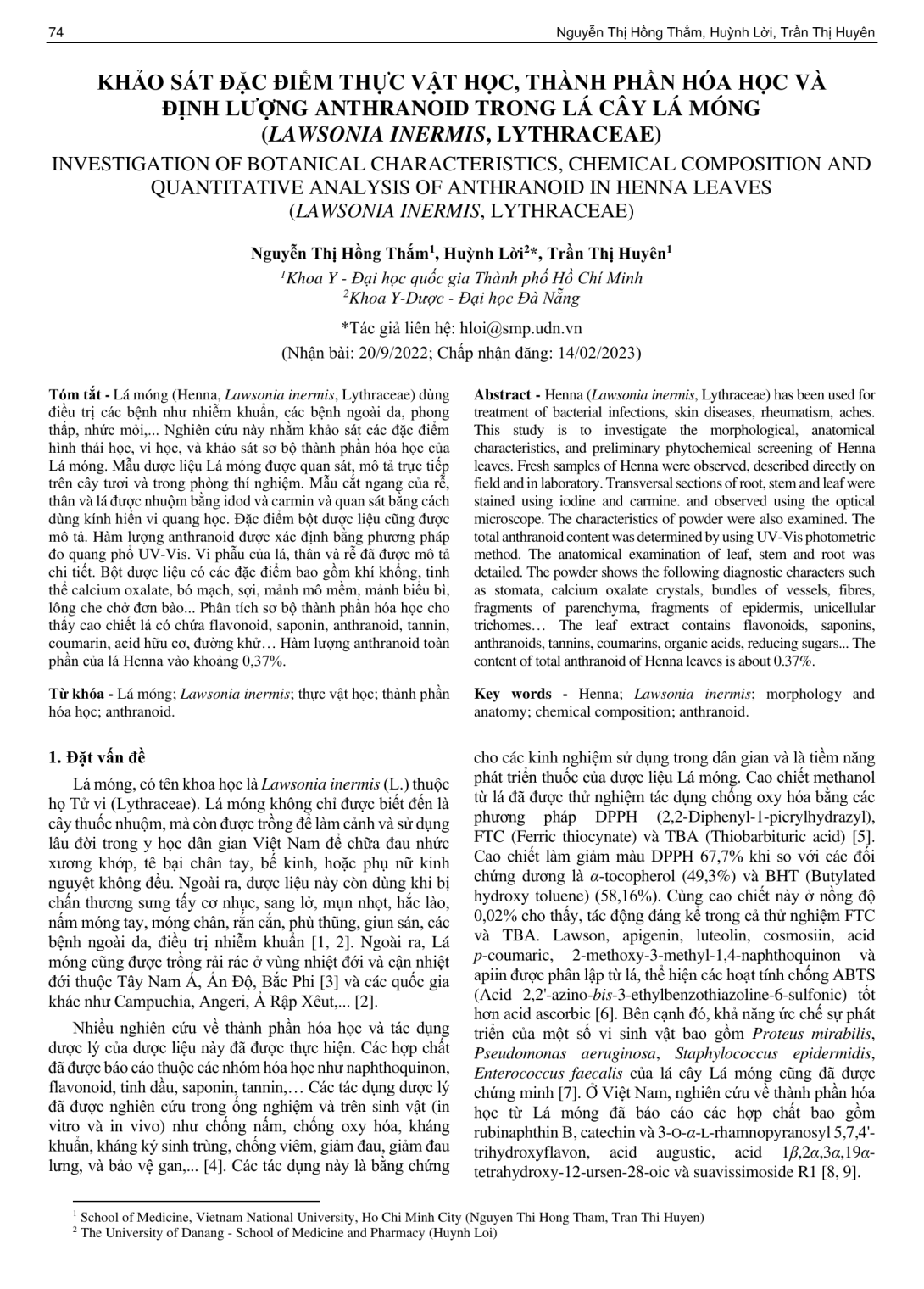
Lá móng (Henna, Lawsonia inermis, Lythraceae) dùng điều trị các bệnh như nhiễm khuẩn, các bệnh ngoài da, phong thấp, nhức mỏi,... Nghiên cứu này nhằm khảo sát các đặc điểm hình thái học, vi học, và khảo sát sơ bộ thành phần hóa học của Lá móng. Mẫu dược liệu Lá móng được quan sát, mô tả trực tiếp trên cây tươi và trong phòng thí nghiệm. Mẫu cắt ngang của rễ, thân và lá được nhuộm bằng idod và carmin và quan sát bằng cách dùng kính hiển vi quang học. Đặc điểm bột dược liệu cũng được mô tả. Hàm lượng anthranoid được xác định bằng phương pháp đo quang phổ UV-Vis. Vi phẫu của lá, thân và rễ đã được mô tả chi tiết. Bột dược liệu có các đặc điểm bao gồm khí khổng, tinh thể calcium oxalate, bó mạch, sợi, mảnh mô mềm, mảnh biểu bì, lông che chở đơn bào... Phân tích sơ bộ thành phần hóa học cho thấy cao chiết lá có chứa flavonoid, saponin, anthranoid, tannin, coumarin, acid hữu cơ, đường khử… Hàm lượng anthranoid toàn phần của lá Henna vào khoảng 0,37%.
Henna (Lawsonia inermis, Lythraceae) has been used for treatment of bacterial infections, skin diseases, rheumatism, aches. This study is to investigate the morphological, anatomical characteristics, and preliminary phytochemical screening of Henna leaves. Fresh samples of Henna were observed, described directly on field and in laboratory. Transversal sections of root, stem and leaf were stained using iodine and carmine. and observed using the optical microscope. The characteristics of powder were also examined. The total anthranoid content was determined by using UV-Vis photometric method. The anatomical examination of leaf, stem and root was detailed. The powder shows the following diagnostic characters such as stomata, calcium oxalate crystals, bundles of vessels, fibres, fragments of parenchyma, fragments of epidermis, unicellular trichomes… The leaf extract contains flavonoids, saponins, anthranoids, tannins, coumarins, organic acids, reducing sugars... The content of total anthranoid of Henna leaves is about 0.37%.
- Đăng nhập để gửi ý kiến
